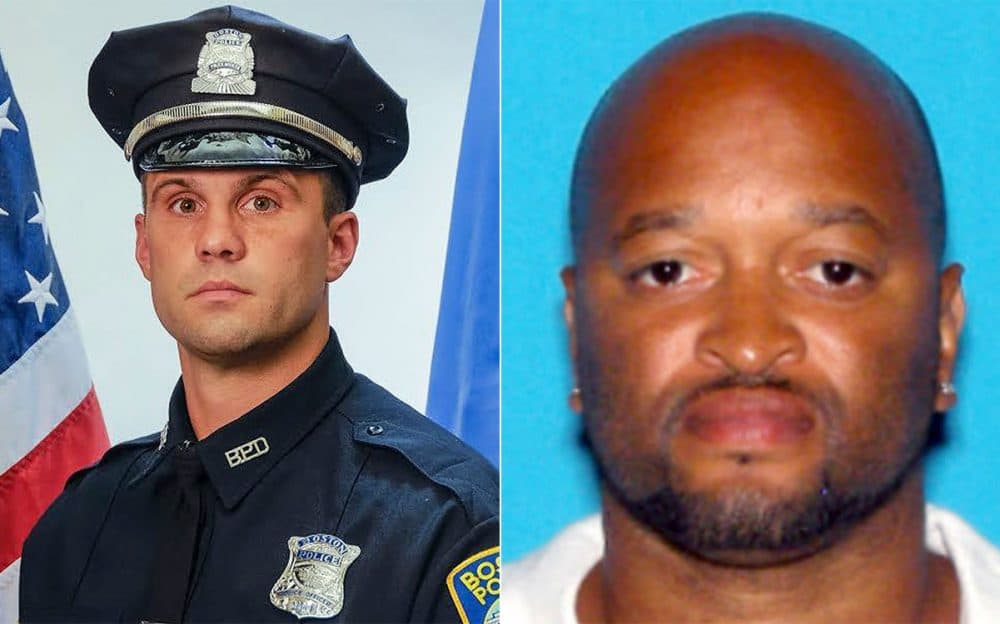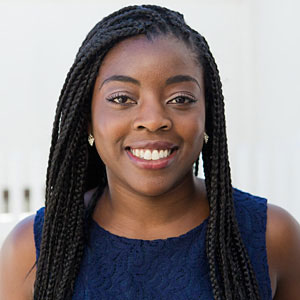Advertisement
After Officer Shooting, Community Leaders Praise Transparency — And Call For More

Following this weekend's point-blank shooting of a Boston police officer, and the subsequent fatal shooting of the alleged assailant by cops, some community leaders say they want continued outreach and transparency from law enforcement regarding other incidents.
Less than 24 hours after Friday's incident, in which Officer John Moynihan was shot in the face and Angelo West was shot and killed in Roxbury, Boston police met with several community leaders and local clergy to show them surveillance video of the shootout and answer questions.
Police Commissioner William Evans and community leaders were in communication shortly after the Friday shooting via text messages and phone calls, and a meeting was set up. On Saturday afternoon, community leaders and elected officials met with Evans, Police Superintendent-In-Chief William Gross and Boston police command staff at police headquarters.
This type of community outreach is not unprecedented, according to Boston police and some community leaders.
"It’s something the commissioner has done in the past and plans on doing in the future," police spokesman Lt. Michael McCarthy said.
These types of meetings happen citywide, but do not happen after every crime, according to McCarthy. He said they usually occur when there’s “a significant incident that involves the community or officers.”
Some community leaders say they want more of these types of meetings — and transparency — from police in the future.
Michael Curry, the president of the Boston NAACP, praised the outreach after the shooting and said the "ball [is] in the police department's hands" to continue to share information and answer questions moving forward, "whether there's video or not, because there won't always be video."
Curry said his organization’s relationship with police “really began to flourish” and became substantive when Mayor Marty Walsh took office and Evans was appointed commissioner.
Curry said he regularly receives text messages from Evans or Gross after a shooting in the community, but never had a briefing of this kind.
Advertisement
"I've been president of the branch since 2011, this is the first time I've ever been invited to even get briefed on the details of a shooting investigation with video," Curry said.
Curry said on Friday he received Facebook messages about the shooting and then sent a text message expressing condolences to Evans, who then called him “within minutes” to discuss the shooting.
Lt. McCarthy said the outreach reflects a commitment by Evans and Walsh to keep the lines of communication open with local clergy, elected officials and community leaders.
Rev. Eugene Rivers, who co-founded the Boston TenPoint Coalition, met with police after the shooting and said the approach wasn’t new. He called the meeting an "extension of a tradition" that has been in place for years.
"For the past 20 years the Boston Police Department has been meeting and working with clergy and neighborhood residents and [it] is frankly unique in the country," Rivers said.
He said local clergy and community members meet with police every Wednesday morning in Dorchester as part of a youth violence reduction task force. Rivers said he has been in meetings with police in the past where video footage was shown, but those instances involved assault cases, not shootings.
"My concern is that we not only see videos when it clearly shows what [police] describe... but [also] when the video does not tend to exculpate or vindicate the officers."
Rahsaan Hall, The Lawyers’ Committee for Civil Rights
Community leaders who attended the weekend meeting say what they saw on the surveillance video matched up with the police department's account of the shooting. Police say Moynihan, 34, was shot in the face at point-blank range by West, 41, Friday evening, after West exited a vehicle officers had pulled over as part of an investigation into a shooting earlier that day. A gun battle then ensued, and as West ran away he allegedly continued shooting at officers, according to police. Community leaders say the action goes out of the video frame at that point and you cannot see what happened next.
The surveillance video is expected to be released to the public by the district attorney this week.
Rahsaan Hall, the deputy director for The Lawyers' Committee for Civil Rights, a nonprofit legal organization that handles discrimination cases and issues related to police misconduct, also met with police and viewed the surveillance footage. He said he wants the community to be able to see video footage whenever it's available in other cases.
"My concern is that we not only see videos when it clearly shows what [police] describe — which is an individual stepping out of a vehicle and shooting the officer point blank in the face and then running off shooting at other officers — but [also] when the video does not tend to exculpate or vindicate the officers," Hall said.
Hall, who has worked previously as a prosecutor in Suffolk County, said he appreciated the outreach by Boston police quickly after the shooting. He said though this case may not be like recent high-profile cases of black men being shot by police, such as in Ferguson, Missouri, he hopes the conversations here around police transparency, police body cameras and independent investigations of police-involved shootings continue.
"Even though this is not an unarmed individual who was shot by police ... I still think those same recommendations and suggestions apply in light of the history that exists and the lack of trust that exists between the community and police," Hall said.
Curry said his organization will continue to push for independent reviews of officer-involved shootings -- a recommendation made by the President's Task Force on 21st Century Policing earlier this month. He will also push for police body cameras, something he said should be a serious conversation given how the surveillance video in this case provides support for BPD's account of the incident.
Curry said he will also continue to call for increased diversity across the Boston Police Department — an issue he said is highlighted by another video (which appears to have been removed from YouTube) showing Gross, BPD’s highest ranking black officer, interacting with a crowd questioning why officers fired on West Friday evening. Curry said Gross showed video of that interaction during the weekend meeting, and he also saw another version of the video later. Curry praised Gross’ “patience” and handling of the crowd and said it shows why diversity is needed, because “without that cultural competence or that understanding … it may have turned bloody as we saw play out in Ferguson.” Gross “went out of his way to let their free speech be the extent of that interaction,” Curry added.
Rivers condemned the behavior of those outspoken members of the crowd and said they were not residents of the neighborhood and do not reflect what most people feel. He said there needs to be a serious conversation around policing and forward-thinking dialogue around the larger issues raised following protests across the country last year.
